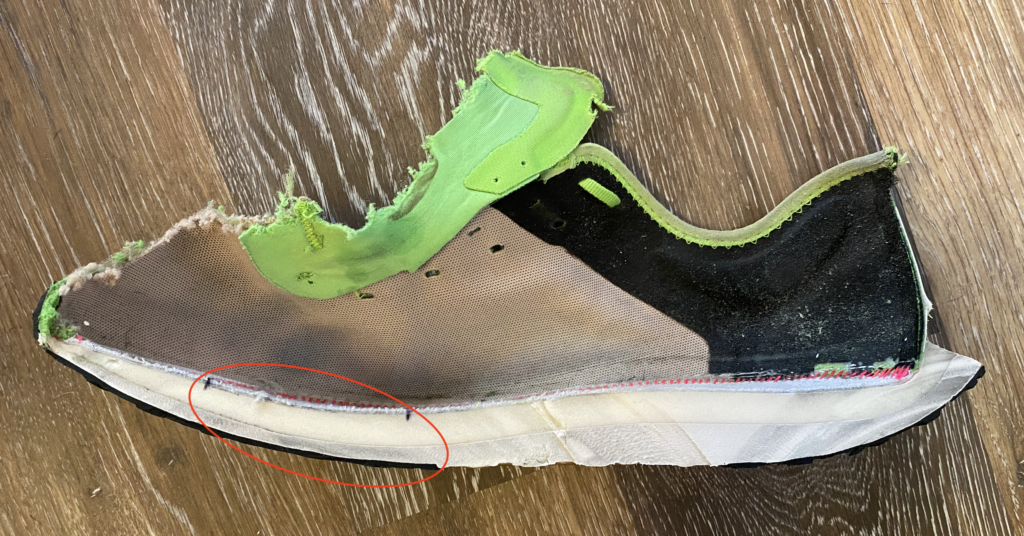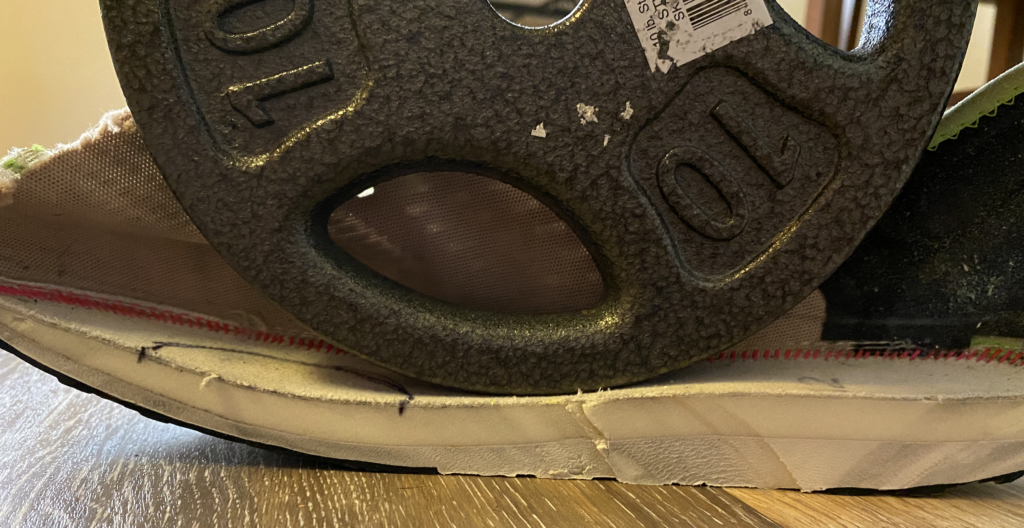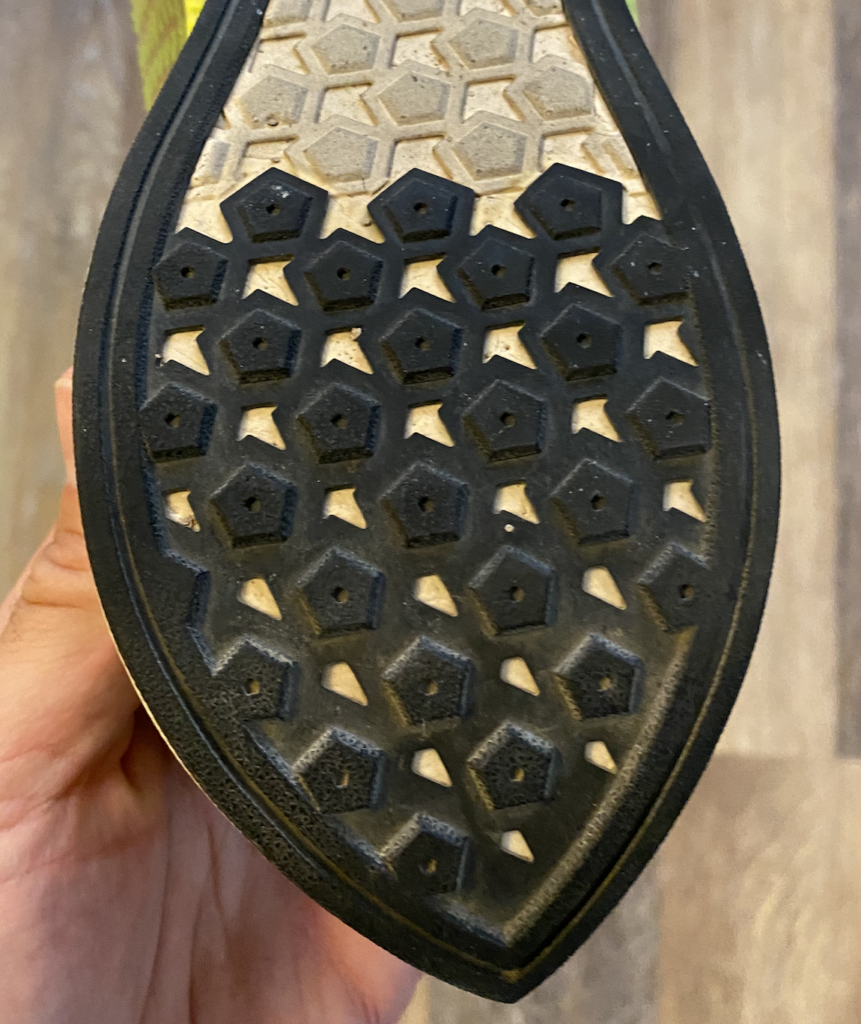“You’ve got to know when to hold ’em
Know when to fold ’em
Know when to walk away
And know when to run….”
– “The Gambler”, Kenny Rogers
Don’t quote me on this, but I believe the origin of this song was from when Kenny Rogers did his first running shoe review on Youtube, circa 1978.
This quote rings soooo true in regards to keeping your running shoes. You truly need to know when they’re good enough to keep, when you need to let go of them, and of course, when to run.
According to this research as you exercise, calories are burned and your body fat percentage decreases. So, exercising not only helps you to reduce belly fat, it also sheds fat from other areas.
Running and walking are two of the best fat-burning exercises, which according to this Resurge reviews when combined with exercise show results with in weeks. Plus, the only equipment you need is a good pair of shoes
Running Shoe Life Cycle
There is no magic number for how long a running shoe will last. With all of the possible variables, such as; materials used, runner weight, temperatures, foot strike, running surface, pace, etc., a specific mileage can’t be assigned to any shoe. There are however averages that we can use to estimate the life of the shoe, and most big shoe companies do tons of research and design in order to meet an average required minimum based on their standards. For example, a company such as Nike typically aims for 400 miles on their trainers, with their road racing shoes coming in around 200-400.
Each person’s length of use is completely personal to them much like running shoe preference. With all of the variables in user and environmental factors, the only thing I can say is that the shoe should maintain it’s same feeling as when it was new (at least to a very large extent). All of the aspects of a shoe should remain intact, especially in the category for which it’s used. A daily trainer should retain its comfort, cushioning, grip and support. A racing shoe should retain proper grip, support, responsiveness. These are just examples, and are far from an exhausted list of requirements, but I think you get the point. It’s utterly important that when deciding if a shoe is still in your best interest, do not wait for all aspects of the shoe to be whittled away, you should ditch the shoe as soon as any single important aspect of the shoe is gone. While we all want to get the most bang for our buck, you’re performance and injury prevention asks that you air on the side of caution and get new shoes at the first assumption of quality loss, rather than trying to squeeze every mile possible.
I’ll move on to my experience with the Nike Pegasus Turbo 2 in order to describe what things to look for and what problems you can possibly run into. In addition, this’ll provide a look at this specific shoe and how it’s performed for me.
Nike Pegasus Turbo 2: The 451 Mile Review

That’s right! 451 miles on the Pegasus Turbo 2! I’ll start off by being totally honest, I wanted to hit the magical 500 mark but couldn’t bear it anymore, these things were not the same and I dread wearing them at this point. Looking back, these were perfect up until about 300 miles, at 350 they were pretty good, and at 400 they were not so hot any more.
I rode these out for this long as an experiment, but I wouldn’t recommend it at all. The miles will vary per person, but when you experience the lack of joy that I saw after 350 miles, you should ditch these. As I look back, the things about the shoe that make it so special had faded, and my love for them was tied to those aspects….. which explains why my joy in using them faded as well.
NOTE: my average weight while using these was 180lbs. I’m a forefoot striker with an ideal foot strike. These were used mostly on asphalt and concrete, with some packed dirt runs. No extreme temps or weather, just regular ‘ol’ usage.
The Upper


The upper held up perfectly. Some shoes can fail in the upper first, where holes and cuts can start happening in the toe box or along the sides of the shoe. In addition, the heel cup or other supporting features may break down or fall apart. For the Pegasus Turbo 2, not a single problem arose in the upper. The upper loosened up and broke in after 20ish miles, and for the next 400 miles, not a single thing changed in the upper. I doubt this will be a spot of failure for anyone using this shoe.
If your shoe’s upper has any failures in it and it no longer feels right or supports your foot correctly, it’s time to move on. By having a bad fitting upper, your foot and ankle may move in a way you don’t want and can increase the likelihood of overuse injuries or strains.
The Midsole

In this first pic, I drew a line around the area where the failure occurred. This circled section as at the ball of the foot and even though you can’t see it well, has a slight cratering from all of the pounding. What I began noticing was that this are no longer had much cushion and felt hard like a racing flat. Essentially, the ZoomX foam which provides the cushioning and bounce had failed and longer did its job. Once the foam was dead, it’s like your just running on the thin bottom layer of React foam. What used to be a great shoe for long runs, began making the ball of my foot sore and hot feeling after maybe 5-7 miles.

This lateral picture has this same ball of the foot circled in red. If you look closely, you can see that the ZoomX has collapsed about 2mm, and even the React foam had collapsed a millimeter or 2. While this doesn’t seem bad, take a look a the next pictures with the 10lb weight sitting on the ball of the foot vs the midfoot. What this shows is that while the foam may mostly bounce back, it lost all integrity. In the less used areas of the shoe, the ZoomX takes a lot of pressure to compress the foam. The forefoot however, takes very little force to completely compress the foam. Imagine my 180lb ass landing on the forefoot, it will completely squish down to a small wafer of foam, which confirms the feelings I had while running the last 100 milies or so. This 10lb weight has no effect on the mid foot, but you can see the forefoot compresses 1-2mm, just from this little bit of weight.


The midsole of this shoe is where the magic happens. With Nike’s newest and most responsive foams, everything that this shoe was built for and that makes it a one of a kind resides right here. In my case with the ball of the foot failing, no other aspect of the shoe mattered enough to compensate for this loss and rendered the shoe useless.
If the midsole of your shoe doesn’t have the right response or feeling, it’s time to get a new pair. When the midsole integrity is lost, you could lose necessary cushioning this defeats the purpose of wearing a comfy trainer. Another and possibly worse issue that you’ll run into with a failed midsole is stability and protection during the foot strike. One thing I’ve noticed in failing running shoes is that midsole foams of all makes will fail unevenly in different areas. This will eliminate the even landing surface which normally allows your foot to land naturally, and leaves you with a surface that forces your foot and ankle to land crooked. With the thousands of steps you take during a run, this uneven landing will cause overuse injuries in the foot or ankle, or other areas if your body starts to overcompensate for the uneven surface.
Outsole


For this particular shoe, the outsole is what surprised me the most regarding longevity. The thinner and minimal carbon rubber on the shoe seemed to be a guaranteed area of early failure. To my surprise, there was tons of meat left on this bone. For me the location that wore the most was to the lateral part of the midfoot. I suspect that this area would’ve been the first to wear out, and this was likely to happen after about 500-550 miles. To be honest, I had my heart set on this wearing out and was bummed when the foam gave out before the outer rubber, which I had been anticipating to be the weak point all along.
It seems that a lot of people have the outsole fail first on whatever shoe they’re using. Maybe because they ride out the shoe longer than they should, or maybe just because of their running style. Regardless, if you find the outsole wearing out on your shoes, don’t try and be hero by using duct tape or rubber to prolong their use. The outsole plays a few roles, including grip, structure and cushioning. One of the biggest worries about letting the outsole go for too long is that you’ll lose necessary grip. In drier places like central california it’s not usually an issue except for a few months out of the year, but in wetter areas, this can set you up for major failure by slipping around. If you slip and slide around, your likelihood of straining or pulling a muscle (predominantly your hip flexor) is greatly increased. A pulled hip flexor may take a month or 2 to recover, and squeezing an extra $10 out of your shoes is probably not worth it, it’s definitely not to me!
Bottom Line
The Pegasus Turbo 2 did quite fantastic! I had read lots of early rumors that the shoe was only good for 200 miles and I have proven that wrong. As a heavier runner, I got a great 350 miles out of the shoe and would expected a lighter runner to get 400, possibly 500! On par with any great trainer. The first failure point was the ZoomX foam, which honestly makes sense. Being a light, airy and premium foam, those attributes will come at a cost. In ZoomX’s case, the cost is price and longevity.
Regarding knowing when to get rid of a running shoe, The Turbo 2 is not unique and hopefully my experience sheds light to others no matter what shoe they’re running in. There’s no need to over analyze your shoe, nor should you attempt to get every mile possible. Your main focus should be to use your shoe until it’s not the same as it was when it was newer. If you notice any; support, cushion, liveliness or other feature of the shoe missing after the miles have been put on it, don’t overthink it or try to postpone getting a new pair, cut your losses and move on! Your safety and physical health isn’t worth the few bucks extra that you’re trying to save.


